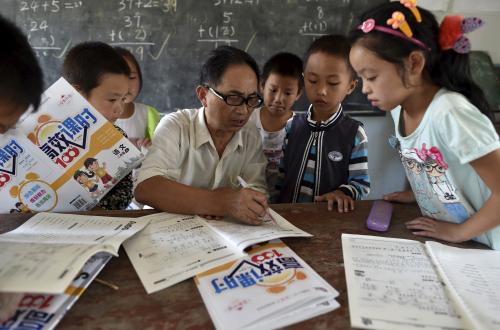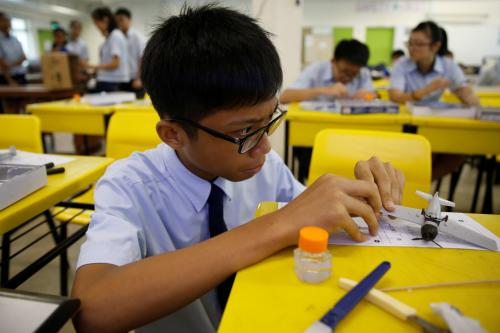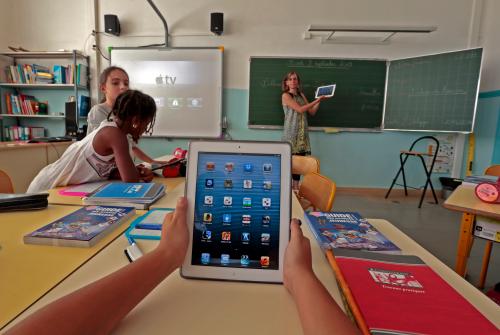Take a moment to think about the discordant connections which now expose people to others in faraway places—satellite signals, fiber-optic cables, television and radio waves broadcast our differences to every corner of the globe.
In Philadelphia, I take sips from a big mug of morning coffee, the orange-yellow sunrise glaring-in through the window to the right of my desk. I’m video chatting with a friend in Sarajevo. For him, it’s lunchtime. He nibbles on “pita.” Not the flat-bread that my kids and I like to dip into hummus, but a savory pastry pie that’s often called burek.
Information networks bring us together technologically. But the encoded signals sent back and forth do not facilitate an experience identical to being in the same place. Communication is quick and efficient, but the affective stimuli, which shape our moods and dispositions—and provide the foundation for empathy—remain disjointed.
For us, it’s just a conversation. But look at the same phenomenon from a macro perspective—consider all the images, words, and stories that people now encounter. Worldwide, there are more than 4 billion internet users; each spends an average of 6 hours per day using devices which enable these oddly dissonant connections. Things can become so quickly entangled that it’s easy to imagine that the World Wide Web was spun by an apathetic spider. We have all metamorphosed into a global community, but we’ve yet to unravel all the potential intellectual, social, affective, and emotional knots.
The challenge becomes even more acute when it comes to education and childrearing. To live and thrive in this new world—to confront and adapt to its unique frictions and challenges—today’s kids will need to develop a capacity for connected thinking and macro-mindedness. These distinct cognitive and social-emotional skills are the prerequisite for understanding rapidly changing geopolitical climates, for making sense of a globalized economy, and for contributing to a worldwide community. Kids need to be tolerant of diversity, respectful of difference, but also alike enough to manage constant connection. Grownups need to teach them how to mediate the tension between preserving heterogeneous cultures and adopting homogeneous protocols.
That’s why I wrote The Joan Ganz Cooney Center Guide to Digital Play for Global Citizens. I wanted to help adults prepare kids for a world that’s governed by new technological, economic, and geopolitical paradigms. I wanted to introduce educators, youth development leaders, and parents to innovative tools which can help kids learn about, understand, and engage with our connected world. After all, academic knowledge and vocational skills are useless if they can’t be leveraged by collaborative, caring, compassionate, creative, and confident global citizens.
Divided into three parts, the guide introduces ready-to-use resources to 1) help kids build awareness of themselves and the world around them, 2) recognize and investigate the history, as well as the complex, systemic causes of contemporary issues ranging from economic inequality to global conflict to cultural diversity and inclusion, and 3) use digital play to explore the issues around climate change and the our relationship natural world.
But why a guide to digital play? Because digital play is a great way to teach these lessons. While today’s children are playing online, they are also learning to be comfortable with a specific technological worldview. They’re developing the confidence to easily operate and experiment with networked tools. They are applying higher order thinking skills within virtual environments. They are also becoming acclimated to subtle social cues and nuanced behaviors. They’re procuring habits-of-mind for a connected world.
Child development and education experts are both always talking about how young people learn to make use of language, knowledge, and academic content through play, and within the context of lived experience. Although we often think of “context” as if it were some sort of abstract cultural or historical zeitgeist, the reality is much simpler. For humans, context is all about how we use specific sets of tools to intellectually, emotionally, economically, and materially fabricate our world. Digital tools are the new context.
From exploring boundaries, borders, and geography; to developing empathy and understanding of diversity; to developing a sense of curiosity and wonder about nature; this guide is meant to introduce practical, ready-to-use resources and techniques for using digital play to promote the breadth of skills required for true global citizenship.
The Brookings Institution is committed to quality, independence, and impact.
We are supported by a diverse array of funders. In line with our values and policies, each Brookings publication represents the sole views of its author(s).








Commentary
Global challenges for the new (digital) childhood
March 13, 2018